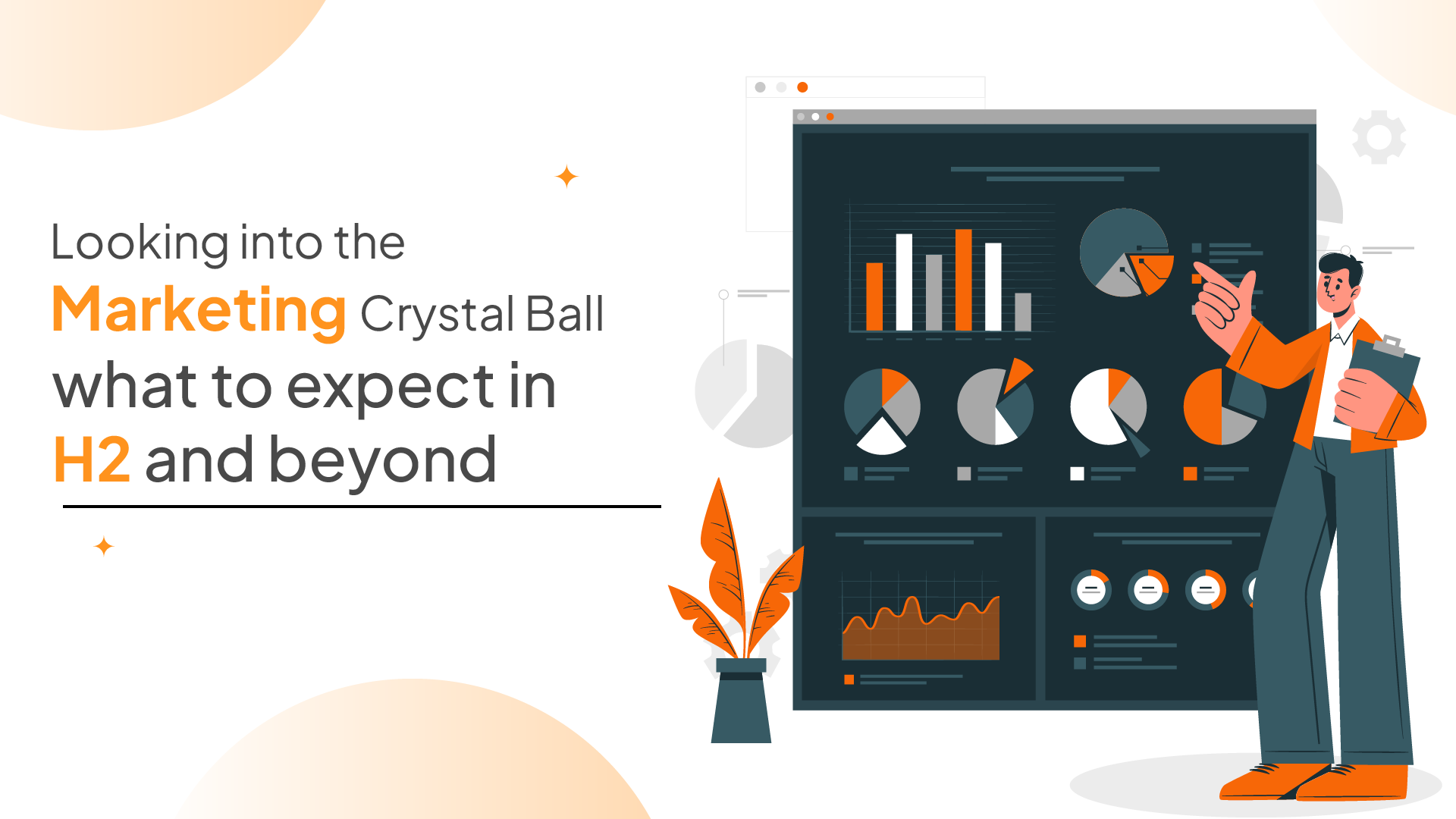

marketing artificial intelligence
Looking into the Marketing Crystal Ball – What to Expect in H2 and Beyond
Looking into the Marketing Crystal Ball – What to Expect in H2 and Beyond
The past couple of years have been volatile, to say the least, for the marketing industry. Macroeconomic headwinds and geopolitical tensions triggered huge shifts in budgets and focus, and a little-known AI chatbot swept onto the scene to change the face of the marketing sector – nay, most sectors – overnight.
But our industry is resilient, and as we head towards the second half of 2024, omnichannel marketers are collectively anticipating growth, intending to maintain or increase spending in nearly every channel. This is according to Mediaocean’s 2024 Advertising Outlook Report, which revealed the latest trends impacting our industry, including media spend, AI, and cookie depreciation. So, what’s in store for H2 2024?
Spending Set to Skyrocket
The outlook is determinedly optimistic for ad spend, with indications of growing budgets across nearly all media channels. Of the 1000+ marketers surveyed, 69% planned to increase social media spend, a rise of 13% year on year, whilst only 3% signalled their intent to reduce it. Digital display/video and Connected TV (CTV) were other channels showing overwhelmingly positive results, with 65% and 56% of respondents planning to increase spend respectively, and just 5% and 8% looking to cut back.
The only channels where the majority planned on decreasing investment were print and TV, signalling not only an increasing focus on digital-first advertising but also a commitment to a diverse mix of media channels, reflecting the industry’s growing confidence in an omnichannel approach.
From the Metaverse Movement to the AI Arena
After storming onto the tech scene in late 2022, ChatGPT only needed a year to reach over 100 million active weekly users. According to parent company OpenAI, today more than 90% of Fortune 500 companies are building on its products. As generative AI tools continue to evolve, conversations are changing from future-gazing potential uses, to realistic applications set to rethink how marketers operate.
Mediaocean’s study found that 57% of marketers selected GenAI as an important consumer trend for 2024, making it the most popular answer. This was followed by CTV/streaming (53%) and TikTok/social video (49%). It marks a huge shift from a year prior when generative AI wasn’t even an option on the survey, as it had not yet hit the industry’s radar.
Companies like Meta, which had been investing heavily in the metaverse over the past few years, are turning their attention away from the virtual world and shifting their focus to the AI space – just 16% of respondents now see the metaverse as a key trend for 2024, down from 35% a couple years prior. However, despite declining interest, new innovations and use cases continue to be released. In a landscape of persistently changing trends, the metaverse may be down, but it’s certainly not out.
So, how is AI being used in action? While Mediaocean’s survey in April 2023 found that AI’s perceived potential was predominantly in copywriting (59%) and image generation (39%), the latest survey sees data analysis (39%) and market research (35%) surge to the forefront, with copywriting and image generation experiencing a sharp decline, landing at 26% and 16%, respectively.
This shift reveals an emerging say/do gap, exposing the disparity between initial claims made by developers and the day-to-day performance of AI. In the case of content generation, limitations around misunderstood context, inappropriate tone, and cultural insensitivity have somewhat stifled initial hype. However, the development of new custom GPTs, in which users can personalise LLMs for specific use cases, has reignited hopes that GenAI can produce context-aware, creative marketing content.
Baking up a Cookieless Targeting Strategy
After postponing its plans for multiple years, Google finally disabled third-party cookies for 1% of users in January. This was the first practical stage of its mission to limit user tracking technology through cookie deprecation, something it had planned to extend to all users in H2 2024. However in April, under heightened pressure from the UK’s Competition and Markets Authority (CMA), Google again postponed the rollout, suggesting now that it will happen in 2025.
Whilst delays have allowed marketers some immediate respite, the prospect still provides a huge test for data-driven advertising, with 75% of marketers admitting they rely heavily on third-party cookies. In H2, marketers will be looking for alternative ways to maintain functions like ad targeting and measurement, without compromising user anonymity. These include the Google Privacy Sandbox Topics API and Protected Audience API for displaying relevant ads without collecting users’ cross-site activity, and Private State Tokens API for blocking spam, fraud, and traffic from malicious sources. Despite the many regulatory hurdles still to be cleared, the shift by Google will remain at the front of advertisers’ minds, with many organisations starting to test cookieless solutions for ad serving and creative personalisation like those offered by Flashtalking.
If we take anything from the marketing industry’s turbulence over the past two years, it’s that nothing can be predicted. However, with spending on the up, innovation like generative AI settling in for the long haul, and advertisers finding new ways to reach customer data without the familiar cookie trail, omnichannel marketers are set to thrive in H2 2024 and beyond.

Aaron Goldman
Aaron Goldman is Chief Marketing Officer at Mediaocean, the mission-critical platform for omnichannel advertising. With $200 billion in annualized ad spend running through its software, Mediaocean provides foundational solutions to connect brands, agencies, media, technology, and data. It also allows Goldman to be “awash” in marine puns. Goldman is also the author of Everything I Know about Marketing I Learned from Google (McGraw-Hill 2010).When he’s not busy Googling himself, Goldman is running around Chicago with his wife and kids.




